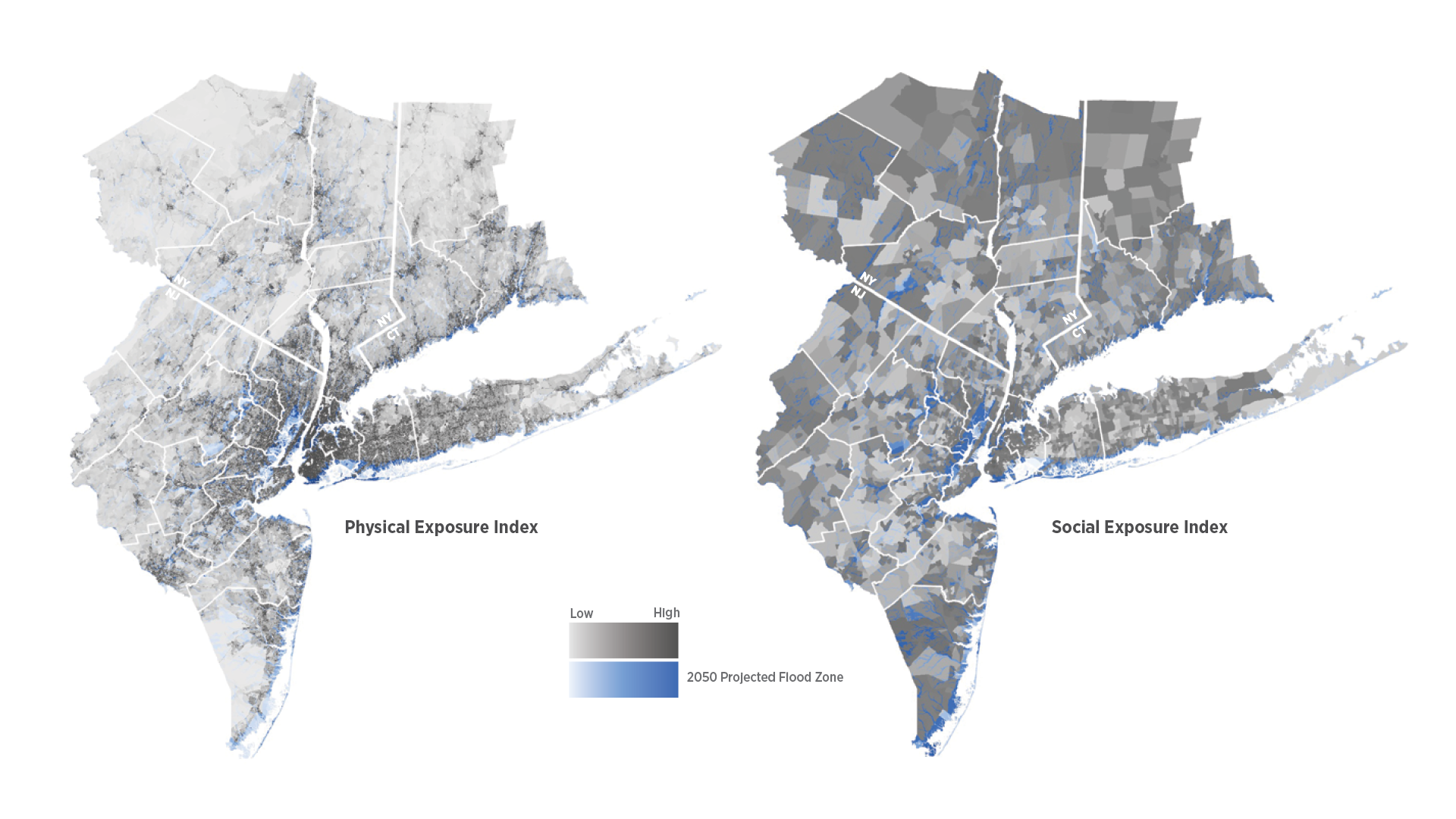
Today, more than one million people in the region live in flood-prone areas, with more than half a million living in dense urban areas, and 385,000 people working there. One-third of the residents in these at-risk communities are elderly, low-income, disabled, or otherwise socially vulnerable.
Surges from Superstorm Sandy breached many of the barriers and sea walls in our coastal urban centers, damaging over 600,000 homes in 2012, claiming the lives of 60 people, and bringing parts of the region to a grinding halt. When the urban core shuts down, the economy slows and the transportation network and waste treatment plants no longer function, threatening the safety and livelihoods of communities.
Efforts to improve resilience have been inconsistent and wholly insufficient. Although few programs have the funding to be fully implemented, some local resiliency projects are underway, thanks in part to the innovative Rebuild by Design initiative, New York City’s Special Initiative for Rebuilding and Resiliency, and other state and local efforts. While many communities are beginning to address the increased frequency of coastal flooding, most have not started planning for the long-term consequences sea-level rise will have on neighborhoods and infrastructure.

Build the capacity for long-term local and regional adaptation to keep communities safe and vital
Outcomes
If short- and long-term adaptation is properly planned for and adequately funded, the region’s urban core could continue to thrive and grow, with significantly reduced risk from catastrophic and long-term sea-level rise flooding. Some areas would see decreases in population and increases in natural systems. Others would receive more protective infrastructure—ideally combined with community uses—along with more resilient development.
Reaching that goal would require the following milestones:
- By 2020, every coastal urban center should have an adaptation and resiliency plan with specific projects outlined. A network would be in place to share information among municipalities and across boundaries. Planning for sea-level rise would be integrated into adaptation and resilience strategies. Ground would be broken and work underway on many of the ambitious adaptation projects being planned today.
- By 2030, most, if not all, of the adaptation projects that today are planned or underway would be completed. Hundreds of thousands of residents would live with minimized risk of catastrophic flooding, and the majority of projects outlined in new adaptation and resiliency plans would have completed planning stages and be starting construction. Municipalities would have collaborated through a Regional Coastal Commission to complete an integrated and comprehensive urban adaptation plan. Low-lying communities would begin to implement projects and policies to respond to the permanent flooding from sea-level rise that would be starting to affect a number of communities.
- By 2040, coastal urban centers would be working together to complete projects in the comprehensive plan and make adjustments as sea-level rise increases.
Paying For It
Completing adaptation projects would require tens of billions of dollars over the next few decades. Funding for most of the projects underway has come from the federal government in the form of disaster relief, or occasionally from preventative programs like the Hazard Mitigation Grant Program from the Federal Emergency Management Agency (FEMA). To supplement federal revenue and ensure a more stable and reliable source of funding, the Fourth Plan recommends the development of state Adaptation Trust Funds. We must also address further challenges to implementation, including outdated regulations and bureaucracy, as well as the political will, to succeed. Projects should be evaluated using benefit-cost analyses that take into account environmental and social impacts. Communities should be offered incentives for regional coordination and hazard mitigation, similar to the NFIP Community Rating System program, which reduces flood insurance premiums up to 50 percent if concrete efforts are made to strengthen resilience.